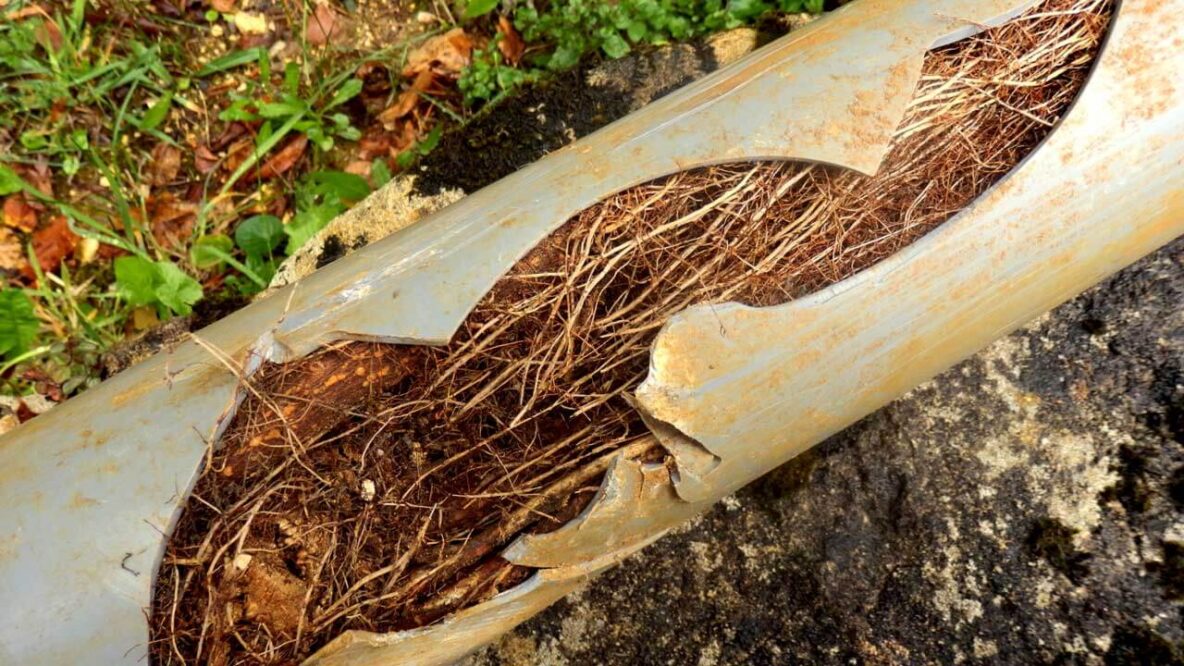The Roto-Rooter sewer cleaning machine got its name because it rotates a spinning cable with sharp blades on the tip through underground sewer pipes cutting away tree roots that can clog a sewer and cause sewage backups. Tree roots might seem like fragile little stems but they can grow to monstrous proportions and are incredibly resilient and strong! Roots can cause lots of damage to underground pipes but it takes a long time for the damage to show itself.
Thirsty trees and shrubs send tiny feeder roots out through the soil in search of water and nutrients. When the roots find water, they begin sipping it and pumping it back to the tree. One of the easiest places for roots to find water is an old sewer pipeline made of clay, concrete, iron, Orangeburg or other imperfect materials. When the sewer pipes were laid, their sections were joined together tightly to prevent roots from getting inside. Each section of pipe has a male end and a female end. Clay and concrete were usually “pitched” together using tar pitch or a similar material that helped seal the joints. The problem is that the seals don’t last forever and as the seals fail over time, those little feeder roots work their way inside to infiltrate the sewer pipe and discover the moisture and nutrients they were sent to find. Mission accomplished!
TREE ROOTS GROW LARGER – CAUSING PIPE PROBLEMS
In time, those little roots grow fat and happy. They soon become the tree’s most important lifeline to a seemingly endless supply of water and waste nutrients (think fertilizer). As a result, the roots grow larger so they can deliver more and more water to the growing, healthy tree. As roots grow larger in diameter, they put a strain on the pipe joints and gradually break the clay, concrete or other materials away. To visualize how they do this, think of how many times you’ve seen a tree root push up a section of sidewalk. It’s a slow but steady pressure that gradually defeats the concrete and shoves it aside. The same thing happens to your sewer pipe. As the holes in the pipe get bigger, more water and sewage leaches out of the pipe into the surrounding soil. The soil supporting the pipe begins to erode and the pipe sections start to move around in the watery loose dirt. Pretty soon, the once reliable pipeline starts looking like a loose collection of pipe sections that are only semi-connected as more and more roots infiltrate the pipe and compound the damage. To make matters worse, the roots spread out like nets and catch toilet paper and waste until a clog forms.
ROTO-ROOTER’S STATE-OF-THE-ART EQUIPMENT & TECHNOLOGY CAN HELP WITH SEWER PROBLEMS
A Roto-Rooter plumber can easily cut away young tree roots and restore flow in your sewer. Mature roots become more of a challenge but we can usually cut through those too – up to a point. Once the root mass starts looking like a tree limb, even the mighty Roto-Rooter machine can’t always cut through. And by that time, chances are good that the pipe sections are so damaged and misaligned that the sewer has just about had it anyway. Toilets stop flushing and drains stop draining and sewage has nowhere to go but into a bathtub or sink. Remember, sewers are designed to be a sealed system. If they are leaching sewage into the soil, it’s an environmental issue. Annual sewer cleanings can keep a sewer line open for years if a homeowner keeps up with root growth but eventually, the sewer will reach the end of its life and it has to be replaced.


